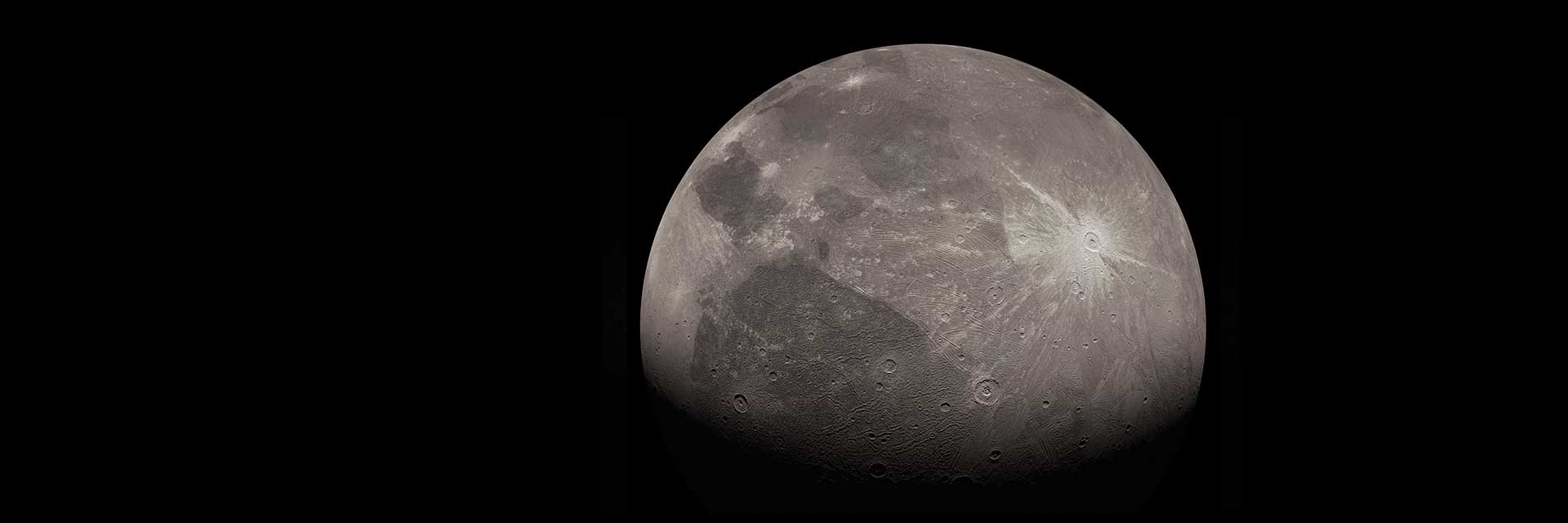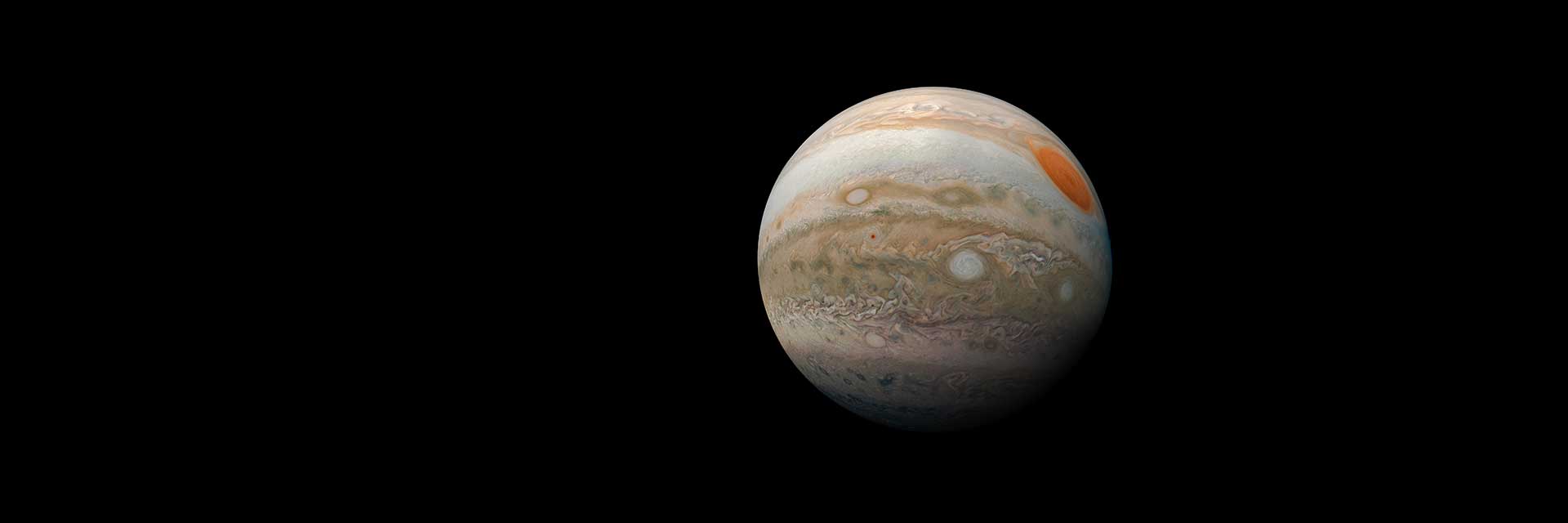
Ganymede
The largest moon in the solar system, this icy world is the only moon to have its own magnetic field – and the atmospheric auroras that come with that.
Jupiter’s icy moon Ganymede is the largest moon in our solar system, even bigger than the planet Mercury, and the dwarf planet Pluto. There’s strong evidence that Ganymede has an underground saltwater ocean that may hold more water than all the water on Earth's surface. It might even have ice and oceans stacked up in several layers like a club sandwich.
Ganymede is the only moon known to have its own magnetic field – something typically found on planets like Earth. The magnetic field causes auroras, or bright ribbons of glowing gas, that circle the moon’s poles.
two views of Jupiter's moon
Ganymede, As Seen by Pioneer 10 and Galileo
Ganymede – A Fresh Look
Several NASA probes have explored Jupiter and its moons, including Ganymede. The Juno spacecraft was most recent, taking detailed photographs of Ganymede in June 2021.
Images taken by Juno on June 7, 2021, provided a fresh look at features on Ganymede’s surface including craters, clearly distinct dark, and bright terrain, and long structural features possibly linked to tectonic faults. Deep inside Ganymede, there’s a metallic iron core that generates the moon's magnetic field. A shell of rock surrounds the core, and another icy shell surrounds the rock.
There is evidence Ganymede has a tenuous oxygen atmosphere.
Pop Culture
Ganymede played a big role in the TV series, “The Expanse.” Ganymede also was featured in several other TV shows including:
- The anime TV series “Cowboy Bebop”
- The Canadian show “Starhunter”
- The British series “Red Dwarf”
Ganymede is a favorite setting in science fiction books. Legendary British writer Arthur C. Clarke was inspired by images from Voyager 2 showing grooved ridges cutting across parts of Ganymede when he created Ganymede City for his novel “3001: The Final Odyssey.” Clarke references Voyager in his sources and writes about his anticipation for more images from the Galileo spacecraft which started exploring Ganymede on June 27, 1996, just days before the book was published.
In 1950, American writer Robert A. Heinlein wrote “Farmer in the Sky” about a teenage boy who followed his father to Ganymede to set up a farm.
Ganymede also played a role in:
- “Cold As Ice” (Series) by Charles Sheffield
- “The Ice Orphan of Ganymede” by Leonardo Ramirez
- “The Runaway Robot” by Lester Del Rey
- “The Moons of Jupiter” by Alice Munro
- “The Gentle Giants of Ganymede” by James P. Hogan
Ganymede may not be burning up the music charts, but it does have a following in the music world. An American electropop duo named their band Ganymede and released a song called “Operation Ganymede” in 2008. The indie-pop group Brazzaville named an album and its title track “The Oceans of Ganymede” after hearing news that Ganymede may have a saltwater ocean.









